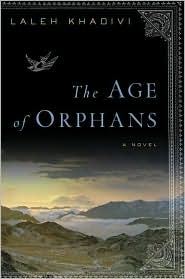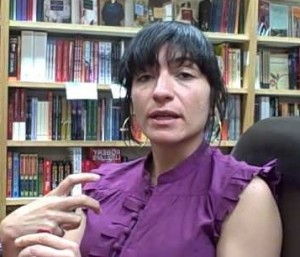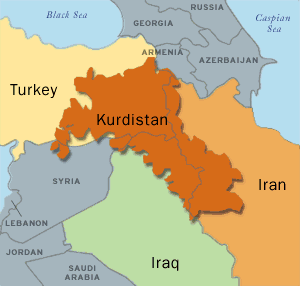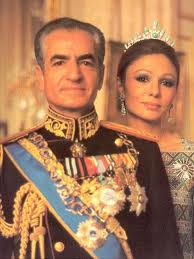“The shah comes with tanks and armies of horses and men. Keep a careful lookout for them. They will be of a frightening size, but do not scare, run to give us warning and all will be well. This is our land and the gods of it are on our side.”
A you ng Kurdish boy, living in the Zagros Mountains in 1921, has always felt loved and protected, despite his family’s “poverty.” He enjoys “flying” from the roof of the family’s hut, experiencing the soaring feelings of earth and heaven at the same time, and identifying with the falcons. In gorgeous and poetic language, author Laleh Khadivi, recreates the “gloried ground” to which the boy is connected by birth and culture.
ng Kurdish boy, living in the Zagros Mountains in 1921, has always felt loved and protected, despite his family’s “poverty.” He enjoys “flying” from the roof of the family’s hut, experiencing the soaring feelings of earth and heaven at the same time, and identifying with the falcons. In gorgeous and poetic language, author Laleh Khadivi, recreates the “gloried ground” to which the boy is connected by birth and culture.
Soon after his initiation into manhood, at age seven, he accompanies the village men to a mountain lookout, where they wait for the shah’s troops. In the ensuing massacre, the boy is orphaned, and he leaves the battlefield with the shah’s army, without a backward glance, ultimately consoled by the fact that he will be getting boots, a whole new “family,” and a new way of life.
 Throughout the novel Iranian author Laleh Khadivi alternates points of view among the various characters, and, in the beginning of the novel, she even personifies nature–a tree, a falcon–in passages of great lyricism. With their echoing refrains and musical repetitions, some of these sections sound like psalms, a striking contrast to the brutality, bloodshed, and horrific rapes which follow soon after.
Throughout the novel Iranian author Laleh Khadivi alternates points of view among the various characters, and, in the beginning of the novel, she even personifies nature–a tree, a falcon–in passages of great lyricism. With their echoing refrains and musical repetitions, some of these sections sound like psalms, a striking contrast to the brutality, bloodshed, and horrific rapes which follow soon after.
Named Reza, for the shah, and Khourdi for his heritage, the boy conscript becomes an unthinking automaton, though he occasionally has moments in which his past overwhelms his present. Sent at fifteen to a Kurdish village, he and the army try to capture two Kurdish commanders, and they engage in terrifying brutality, Reza engaging in some of the most brutal acts of all to prove that he is one of the shah’s men, rather than a “dirty Kurd.”
 As the action moves from the 1930s and into the period of 1940 through the 1970s, Khadivi shows Reza Khourdi continuing to be the perfect soldier, representing the wishes of the shah, but still suffering the inner conflicts of a brainwashed orphan. Khadivi’s portrait of this man is intimate and carefully drawn, and she creates great empathy for him in his plight, despite his actions. His assignment to Kermanshah, a Kurdish city, in 1940, and his long residence there, bring his personal conflicts to a head.
As the action moves from the 1930s and into the period of 1940 through the 1970s, Khadivi shows Reza Khourdi continuing to be the perfect soldier, representing the wishes of the shah, but still suffering the inner conflicts of a brainwashed orphan. Khadivi’s portrait of this man is intimate and carefully drawn, and she creates great empathy for him in his plight, despite his actions. His assignment to Kermanshah, a Kurdish city, in 1940, and his long residence there, bring his personal conflicts to a head.
The novel is primarily a story of character, well drawn and complete, and the violence and inhumanity are integrated as part of the author’s thematic progression as “Reza” moves from an innocent childhood, through his attempts to find “family” within the killing machine of the army, his attempts to find love, and his final assessment of his own life. Reza represents many of the conflicts we read about today–specifically, the conflicts between Iran and the Kurds and between Turkey and the Kurds–and the novel is enlightening and absorbing, but Khadivi also includes broader themes–the use of boy soldiers, the brainwashing that takes place, and the reasons these boy soldiers are sometimes more brutal than their elders. Though the novel is not easy reading for people who live safe and comfortable lives, she opens such a world to examination and analysis.
to find “family” within the killing machine of the army, his attempts to find love, and his final assessment of his own life. Reza represents many of the conflicts we read about today–specifically, the conflicts between Iran and the Kurds and between Turkey and the Kurds–and the novel is enlightening and absorbing, but Khadivi also includes broader themes–the use of boy soldiers, the brainwashing that takes place, and the reasons these boy soldiers are sometimes more brutal than their elders. Though the novel is not easy reading for people who live safe and comfortable lives, she opens such a world to examination and analysis.
ALSO by Laleh Khadivi, THE WALKING
Notes: The photo of the author is part of a video interview with her on http://www.ratedesi.com
The map of Kurdistan, relative to Iran, is from http://zagrosphoto.com
The picture of the Shah and his queen appears on http://revmagdalen.blogspot.com
